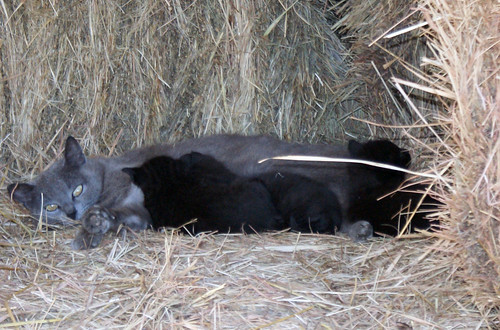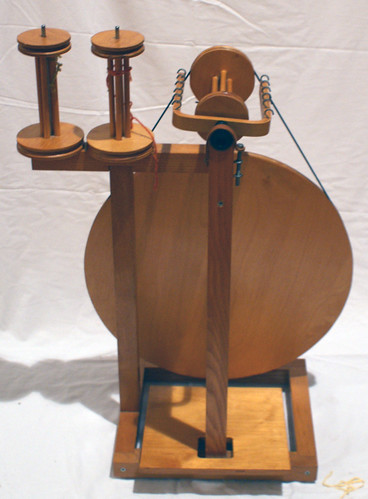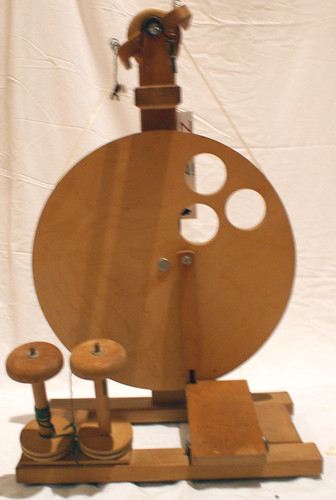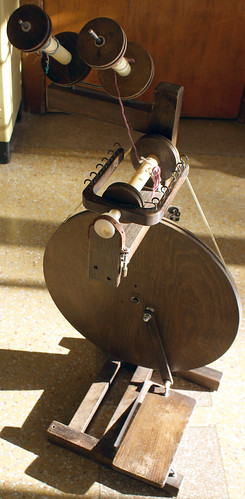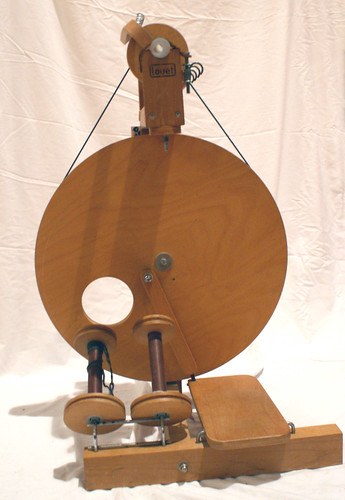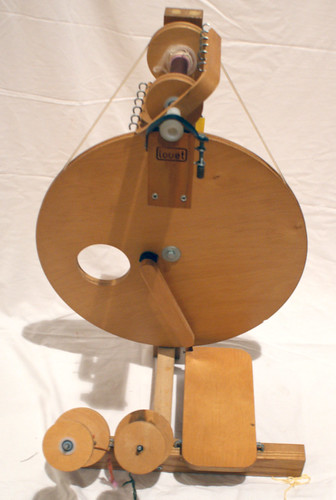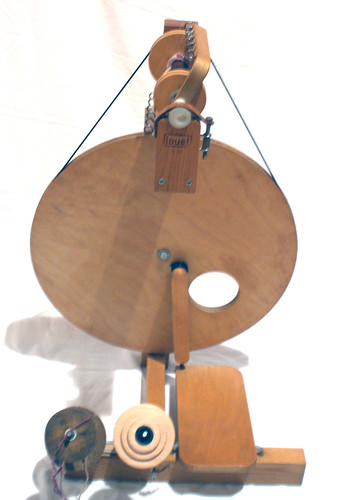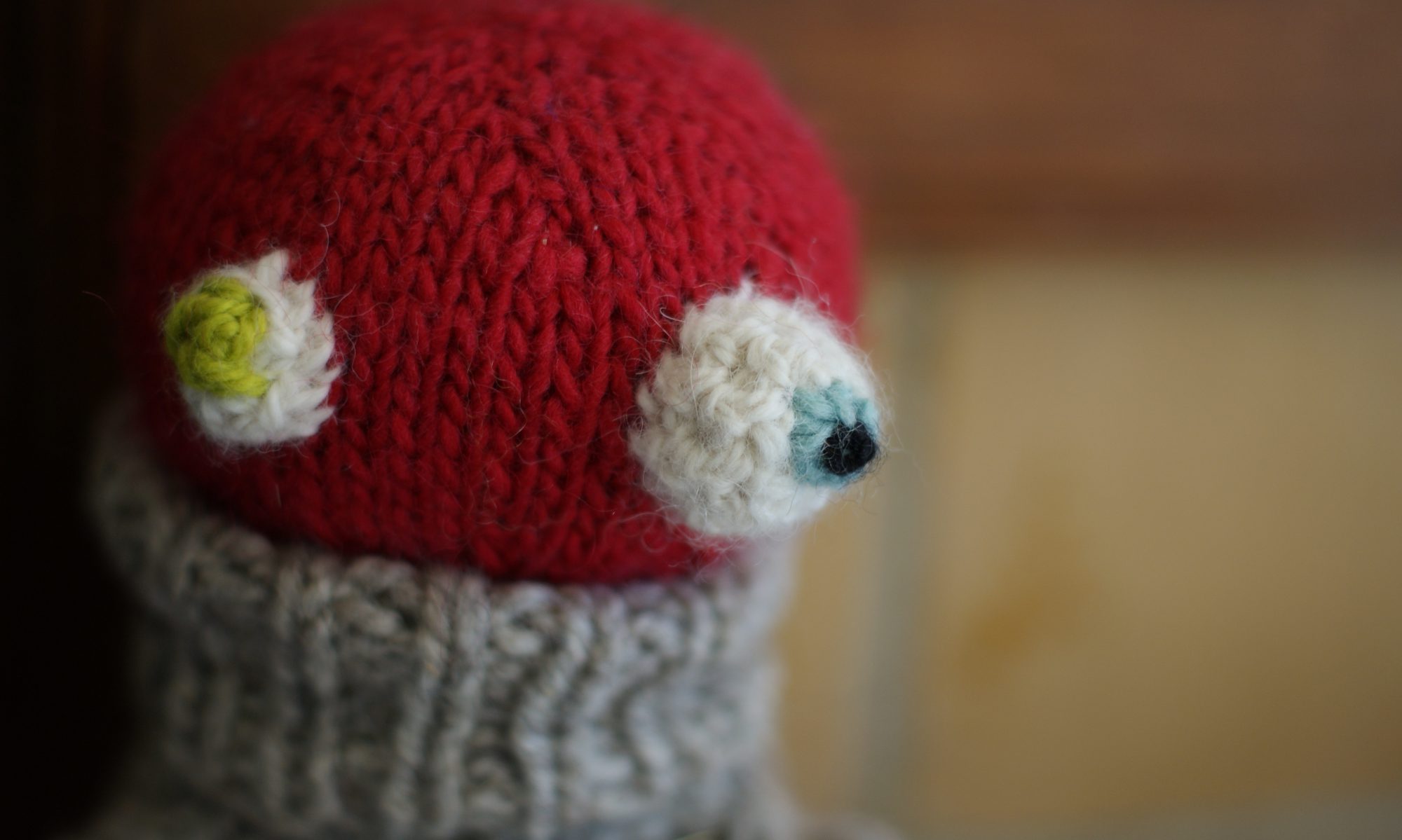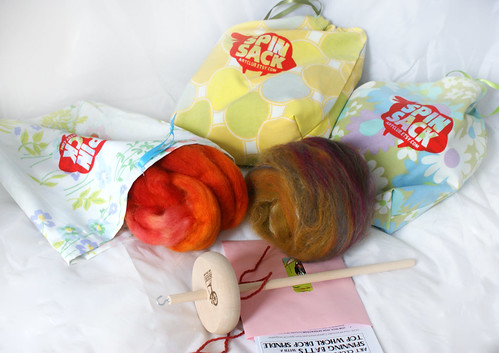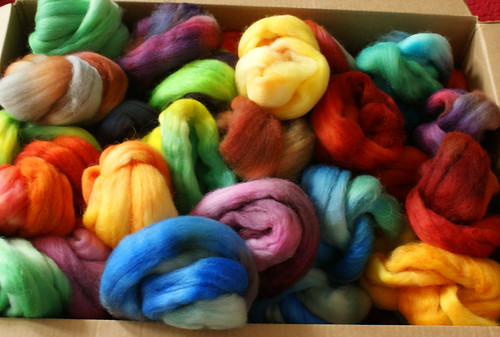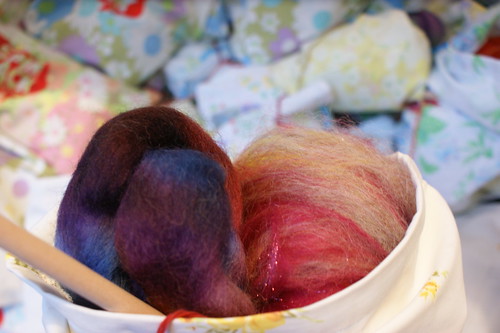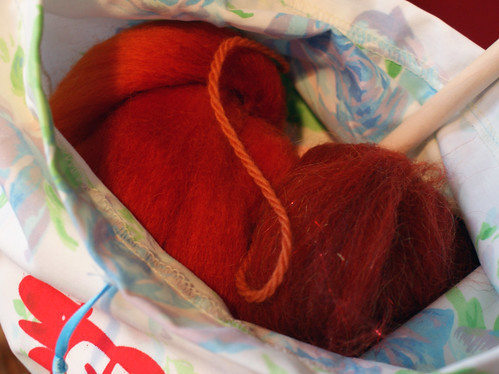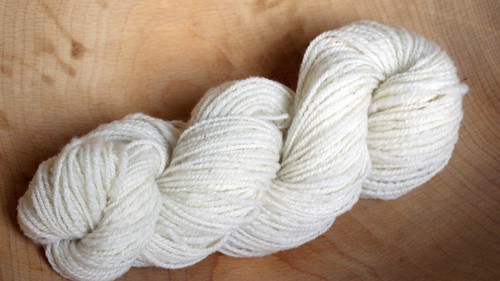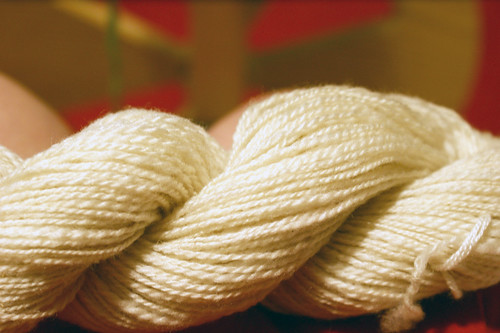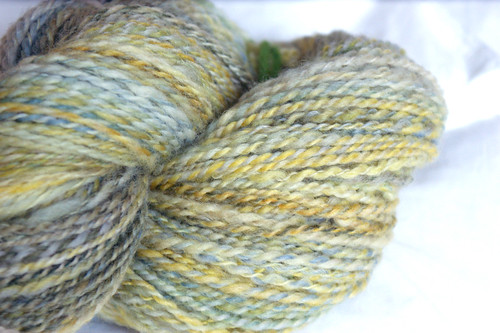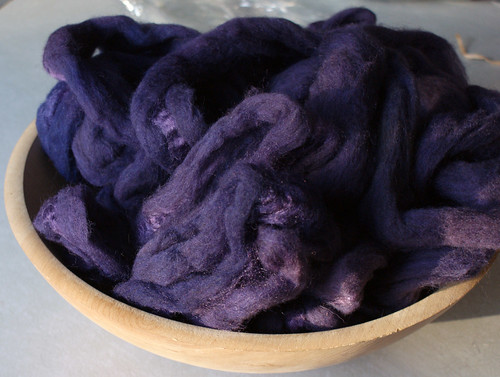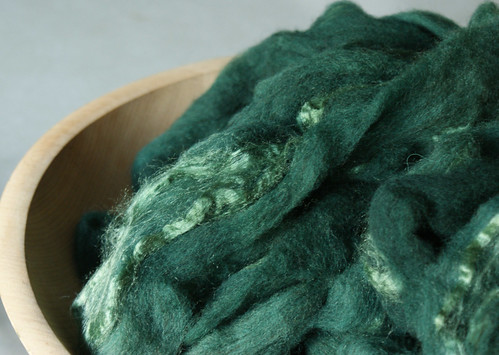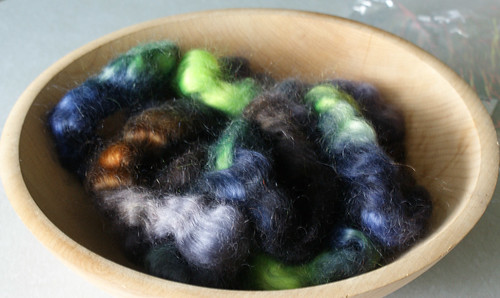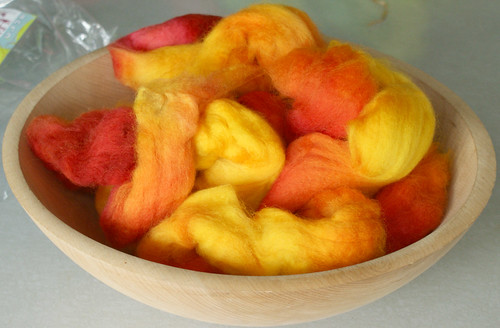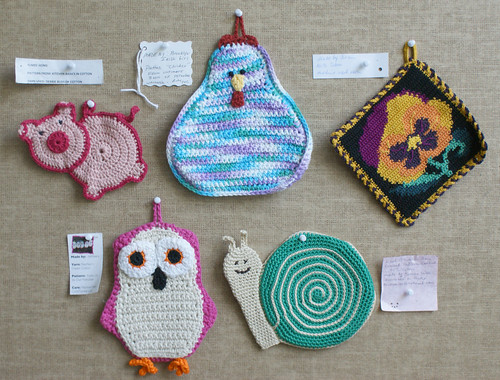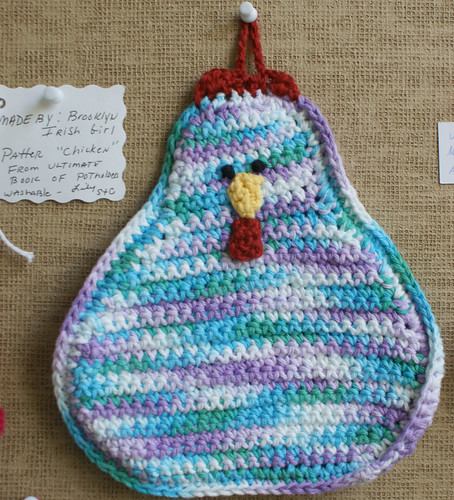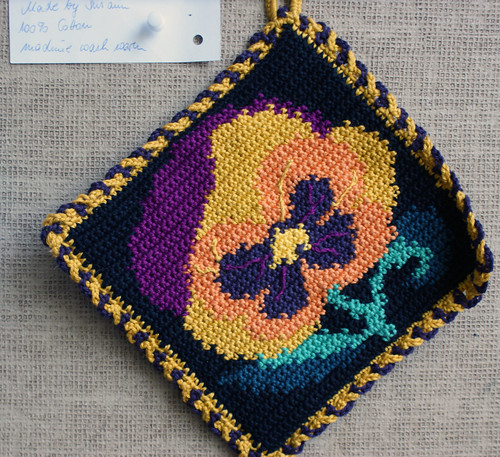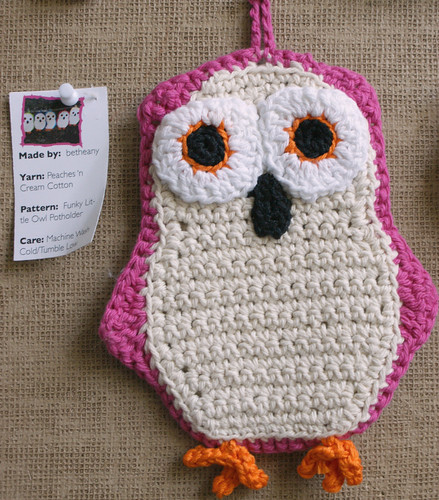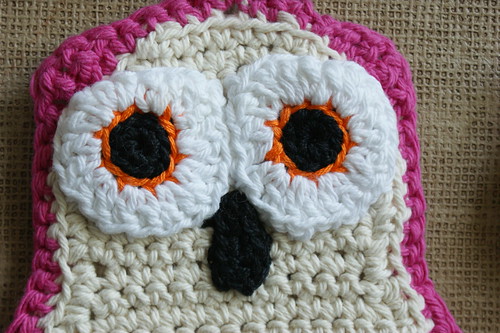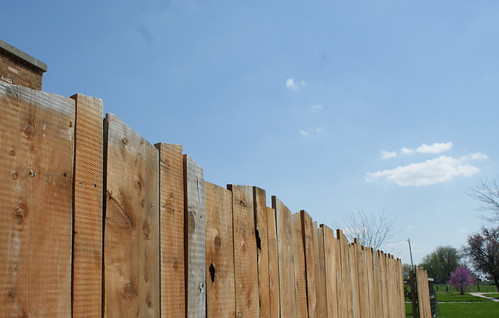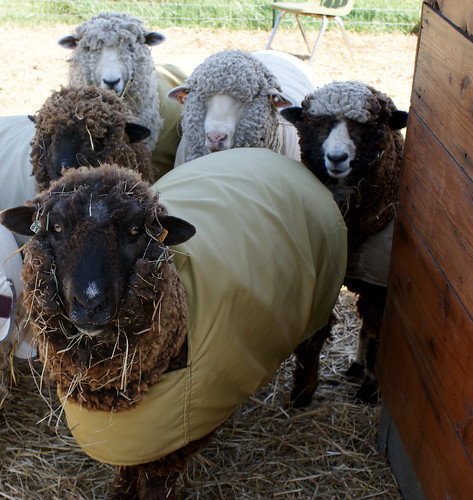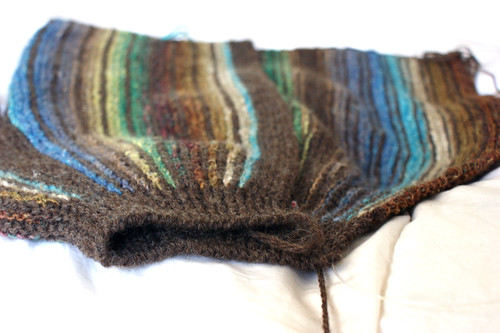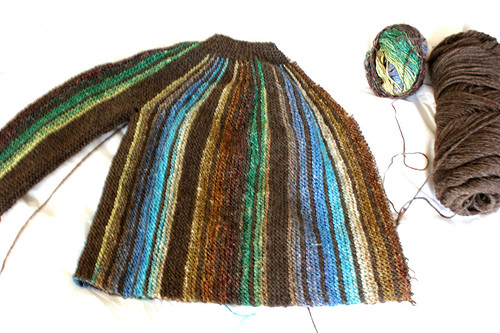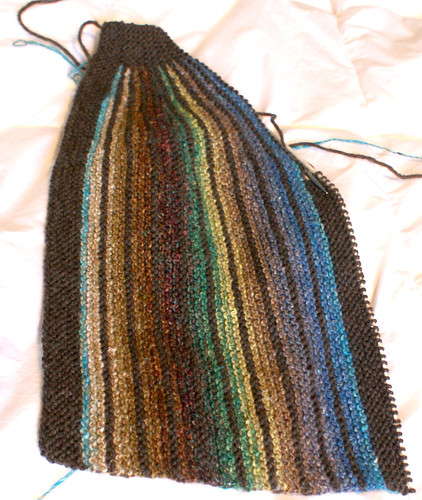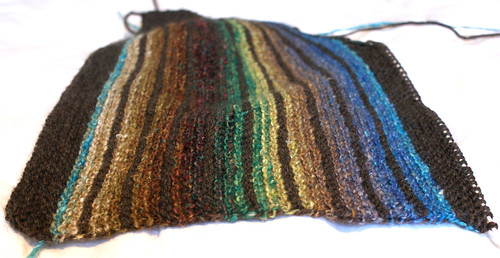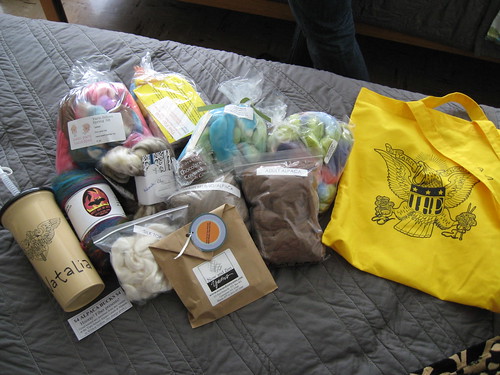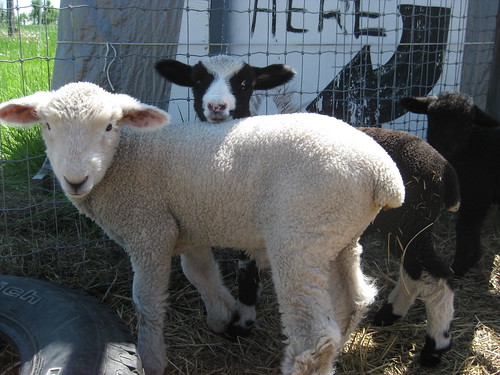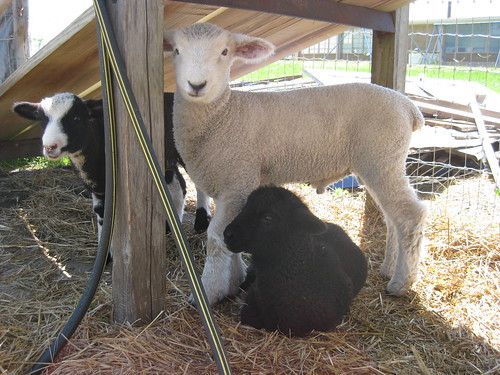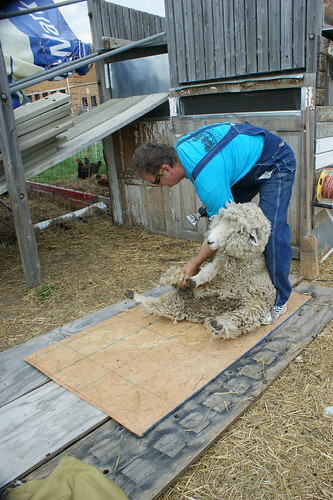
This year’s shearing day was just 2 days before Yarn School, and my head wasn’t in the game. Next year, I promise to be better prepared, and to take them off feed the night before. Full sheep are squirmy sheep. Squirmy sheep get nicked. We had several nicks this year (vs. none last year, when I removed their hay), alarming to neurotic novice shepherds like me. Each got a little splash of iodine and scabbed up like a scraped knee within a day.
We don’t have a slab, so for shearing, we just throw down some plywood and run out an extension cord to make a clean, stable working area. We also had a wee makeshift skirting table. Next year, I want a larger skirting table, and I will definitely remember to take away the hay the night before. After shearing each animal, it stayed on its butt a bit longer (they’re more or less passive when seated as above) and Danny gave each its CD/T vaccination and trimmed hooves, and I checked eyes with the FAMACHA score card (which I have since misplaced, arrgh) and wormed if necessary. Interestingly, only the black sheep needed dewormer. I’ll be checking every 2 weeks until winter.
The fruits of our labor: 7 prime fleeces, aggressively skirted:
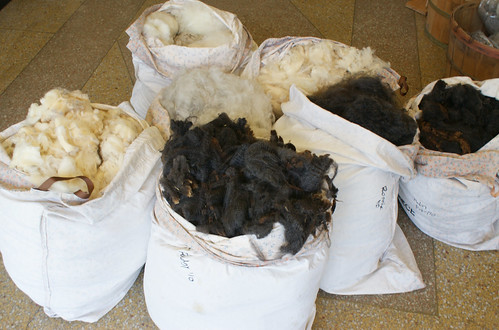
Seconds (nice wool not covered by jackets, so more hay/dirt than above) 6.5# white mix, 3.5# colored mix:

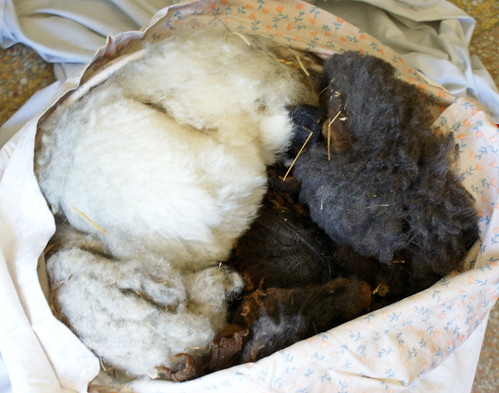
Last year, I combined all seconds from the flock and had it made into felt. I think I’ll use it to make warm felt slippers, embroidered with year or flock names. If they’re successful, maybe I’ll do it every year! Here’s the felt from last year’s mixemups:

And lastly, the dregs, which includes both nicer wool that was way too rife with hay to bother with (mostly necks), plus all the (literally) crappy stuff, and the coarse leg and belly wool. There’s 14.5#! I may do a quick sort before I put it on the garden and increase the seconds bags, but most or all of this will become excellent garden mulch!
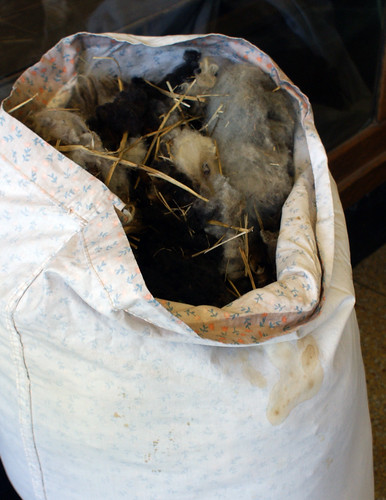
Comparing crimp, grease & length:
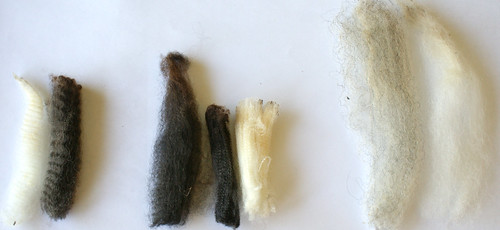
Romneys: Jayne Cobb & Fudgy the Whale; Merinos: Ronnie, Hokey Pokey & Agnes; Shetlands: Mr. Shivers & Uncle Honeybunch.
The Romneys (first pair) are the middle ground in grease, crimp, and length. Jayne may be a Romney-Merino cross; he’s finer and crimpier than mom. Merinos (center 3) are shorter, finer, denser, greasier, and crimpier. The Shetlands (last pair) are the longest, least greasy, and most open, with the least distinct lock formation. Though less crimpy, Shetland fleeces stick together in one big pelt. Merinos look like a heavy, clumpy pelt with cobwebby separations; and the Romeny fleeces kind of tumble apart into thick, chunky locks.
And because I’m bent on obsessive documentation of my fledgling flock, you get the critter-by-critter version as well.
First up:
Jayne Cobb
Yearling wether Romney or Romney X Merino. Mom: Fudgy; Dad: unknown.
Fleece: 3.5#, heavily skirted. He’s about the same size as Agnes, and from a distance they’re hard to tell apart sheared, but there’s an easy trick: Jayne has black hooves and nose; Agnes had a pink nose and white hooves. Also Jayne has a little sheepie pee-pee and Agnes is an innie, but you can’t see that across a field.
BEFORE:

AFTER:
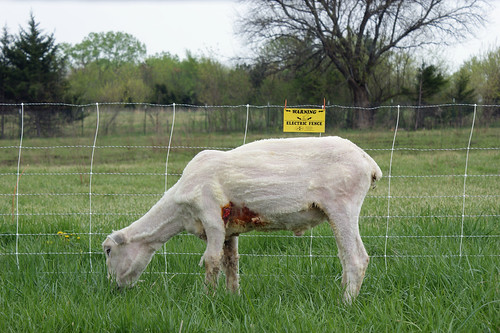
Jayne’s elbow nick was the first and the worst. It bled a lot and looked scary and dramatic and made my stomach lurch, but the patch of skin was actually quite small, maybe 1/2″ by 3/4″, but inconveniently placed to stretch with every step. But unlike me, he wasn’t at all bothered by it. A good deal of the menacing red is just iodine. The bright stuff is blood.
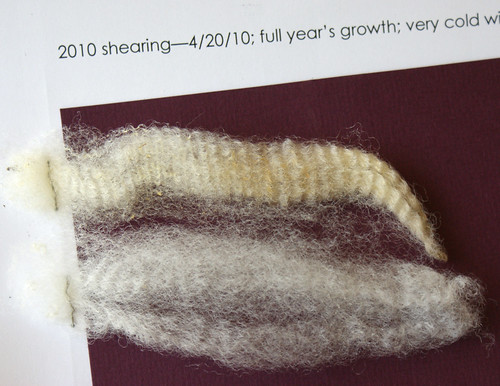
A lot of his fleece was much finer than this sample. It looks somewhere between Romney & Merino, and his pops could be Roger the spotted merino ram (making him half-brothers with the twins) or a big white ram lamb that was briefly in his paddock last fall before I got Fudgy. I like the idea of Fudgy being an ovine Mrs. Robinson. This shows the finer, crimpier stuff.
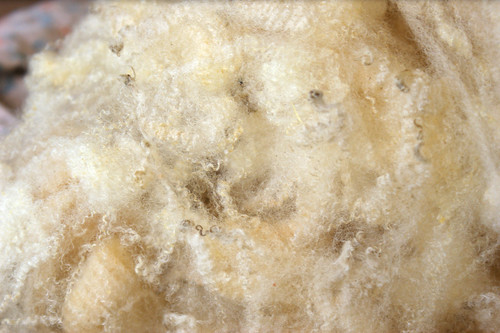

Fudgy the Whale
3-year old registered Romney ewe.
Fleece: 7.5#, heavily skirted.
BEFORE:
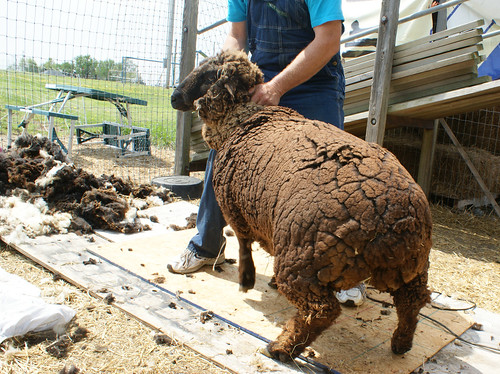
AFTER:

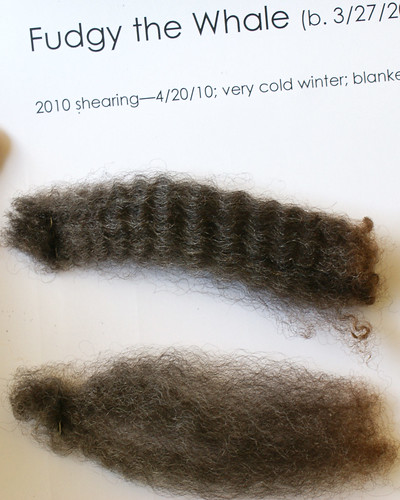

Ronnette “Ronnie” Wigglesworth
Yearling merino ewe. Mom: Agnes; Dad: Roger the spotted merino. Ronnie’s fleece is so different I started to wonder if maybe she didn’t have a different dad, but then I remembered that her grandma, Ninny, had a very open fleece as well. (I bought Ninny’s beautiful spotted fleece from Tina a couple years ago).
Fleece: 3.5#, heavily skirted.
BEFORE:
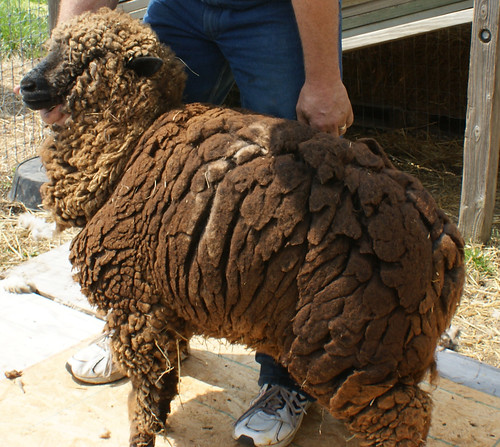
AFTER:

It’s hard to tell in this picture, but she’s quite small, about the same size as the Shetlands. Her nose is so Roman! You couldn’t tell at all when she was in full fleece.
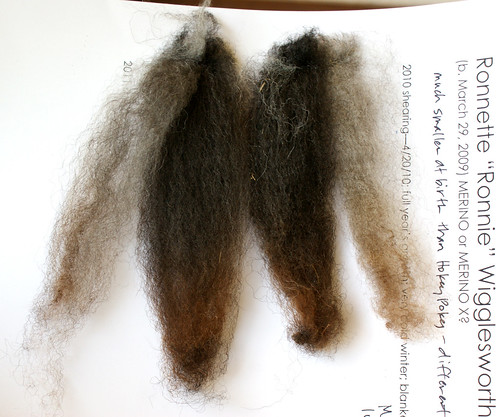
The lighter samples came from those spots on her back. Both Ronnie and Fudgy have light spots I didn’t remember. Ronnie has much less grease than her brother and mom.

Her fleece really reminds me of her grandma’s, which made this beautiful combed top.
Hokey Pokey
Yearling merino wether. Mom: Agnes; Dad: Roger the spotted merino.
Fleece: 4#, heavily skirted.
BEFORE:
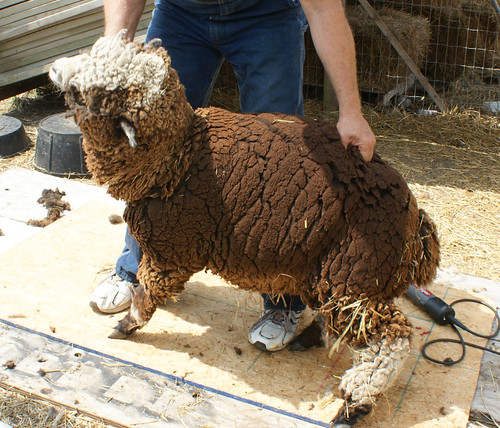
AFTER:
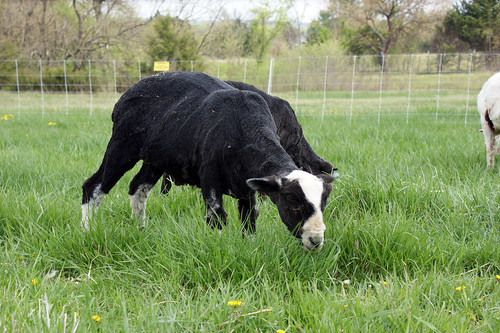

Hokey Pokey’s fleece ranges from heavily silvered to quite black, with more silvery overall. While it’s heavier than Ronnie’s, it looks smaller, so I’m expecting a higher grease weight and roughly equal overall yield.

Agnes
2-year-old black-factored white Merino ewe.
Fleece: 6.5#, heavily skirted.
BEFORE:

AFTER:

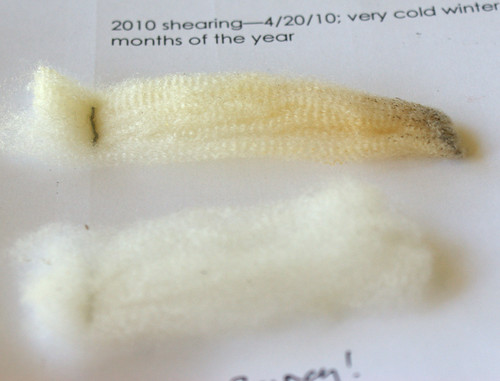


Mister Shivers
2-year-old Shetland wether.
Fleece: 3#, heavily skirted.
BEFORE:
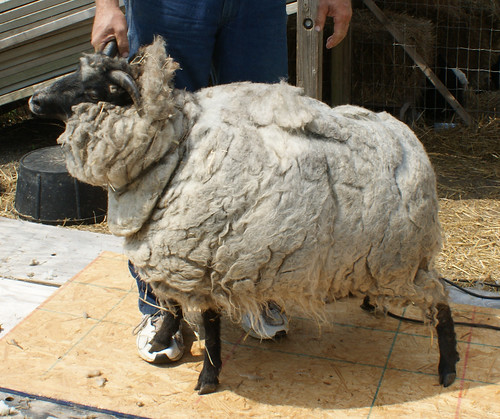
AFTER:
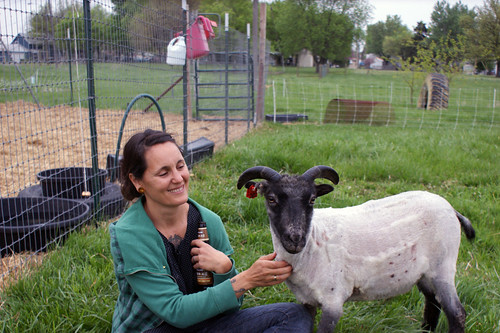

I was stunned at how long the Shetlands were this year! Lovely!

Uncle Honeybunch
2-year-old Shetland wether.
Fleece: 2.5#, VERY heavily skirted (his fleece was so big his jacket was halfway up the side).
BEFORE:
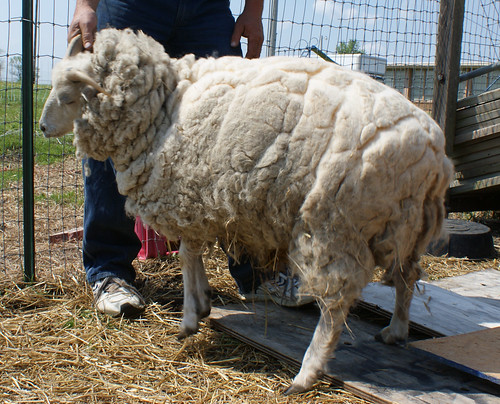
AFTER:
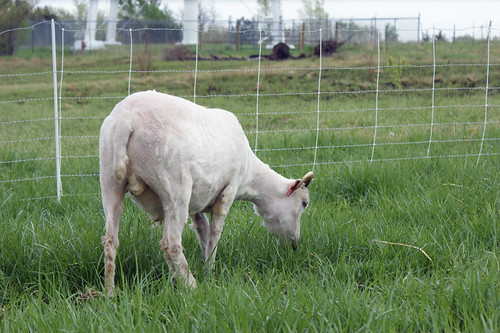
Once again, Uncle Honeybunch is the fattest. He seems so mild-mannered, but he’s really a grain bully.

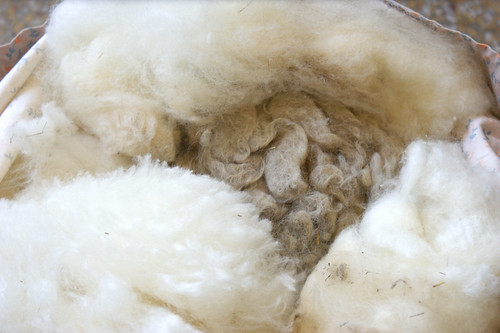
And in other Cupcake Ranch, our barn cat (not officially ours–she just showed up and started hunting out back) had kittens, possibly during Yarn School, when they were first heard mewling loudly. They’ve all been tucked away in the hay, but this morning, they were lounging on a bale. Three black kittens + the big gray mama we thought was a boy. Now that there’s a whole family in residence, I guess they’re more or less officially ours. I’m giving them fresh water, but I think we’ll skip the food as long as everyone looks healthy. I don’t want the mousing to stop (and there are plenty of mice to go around!).
